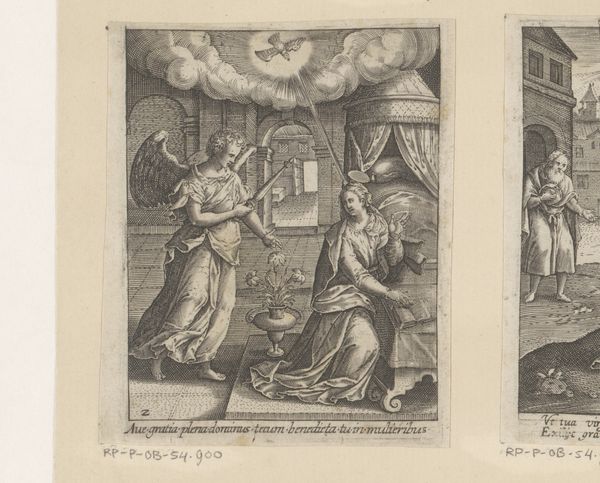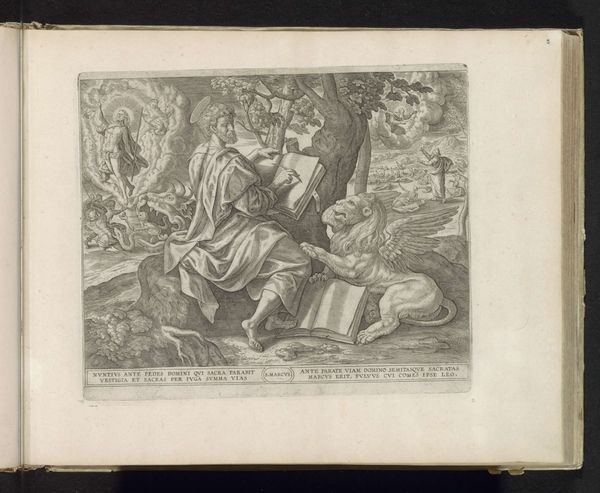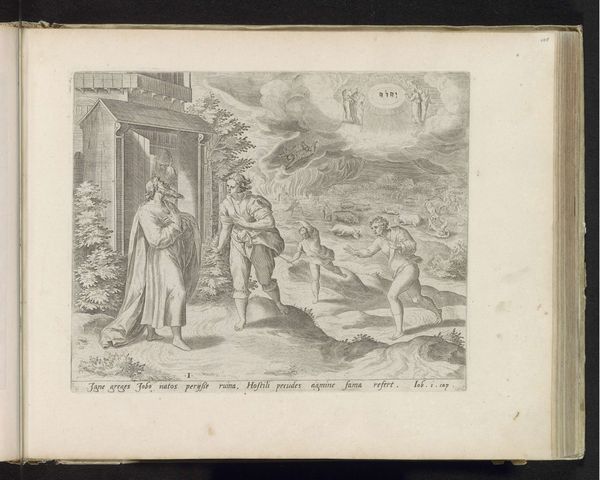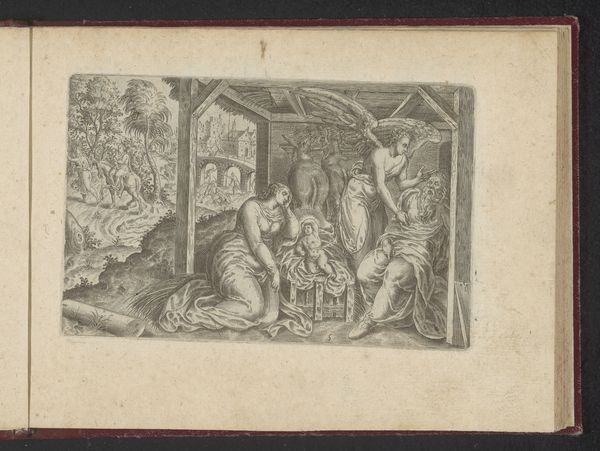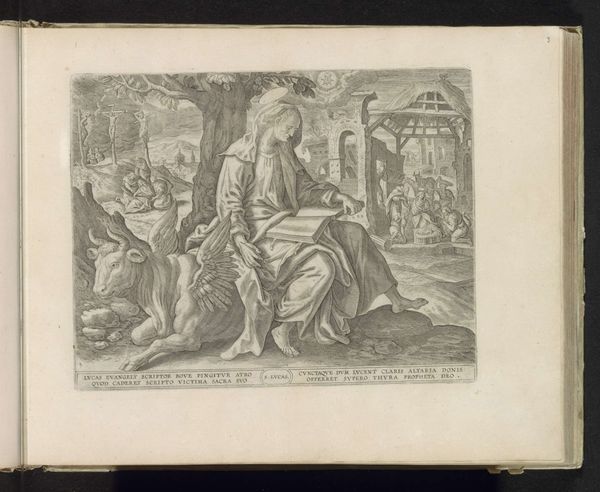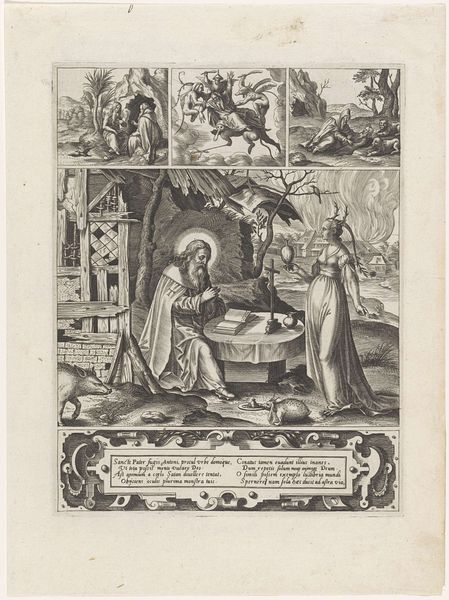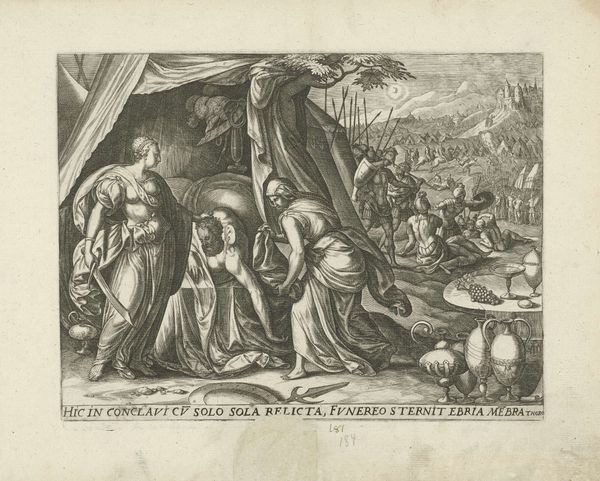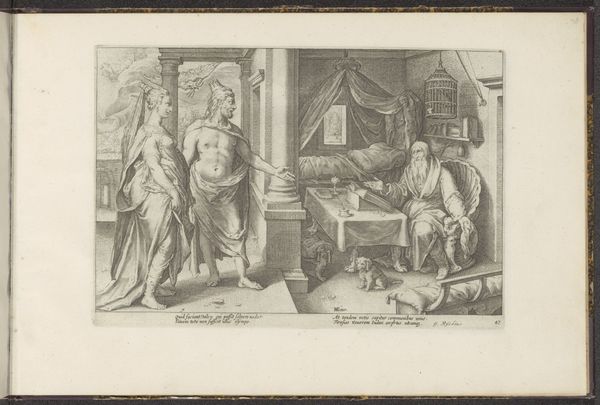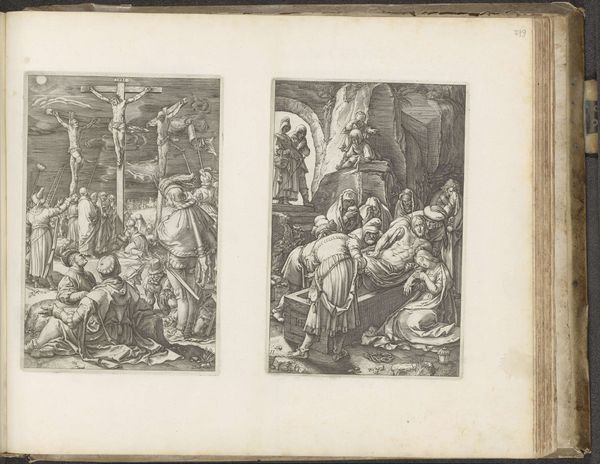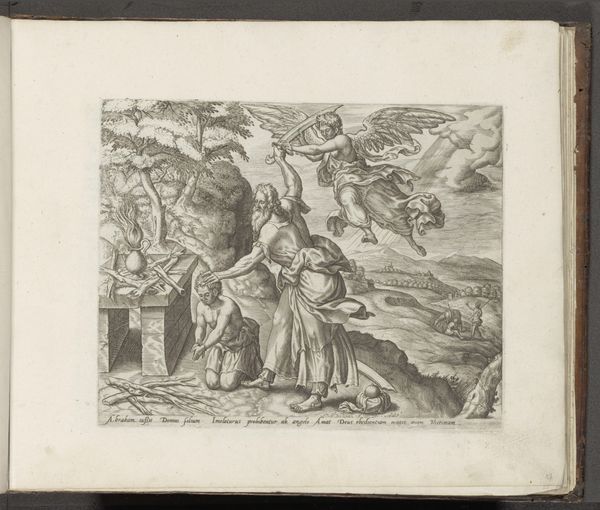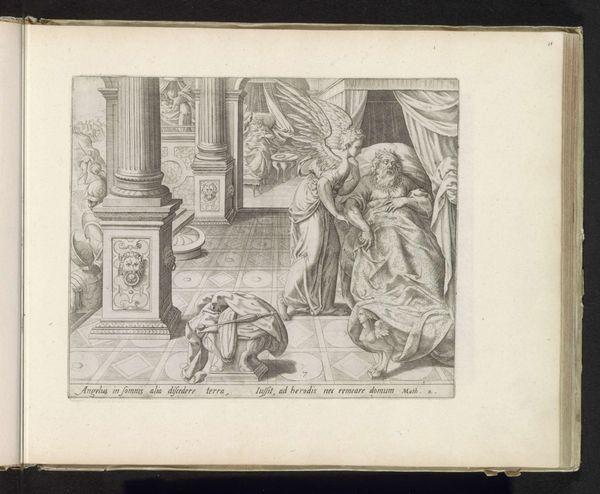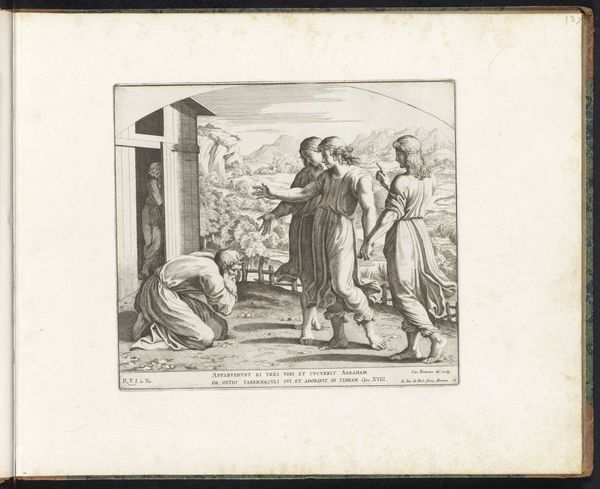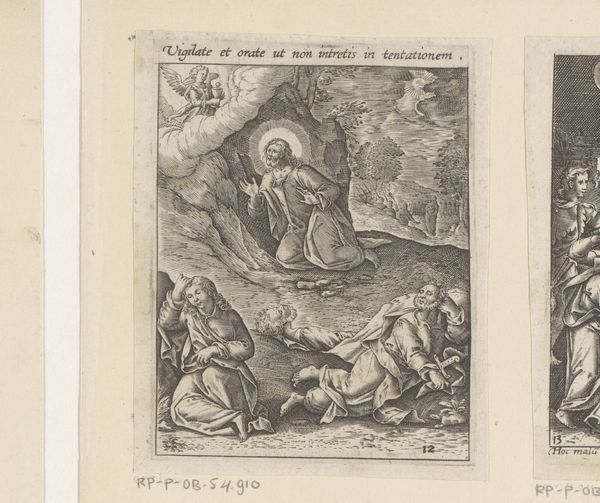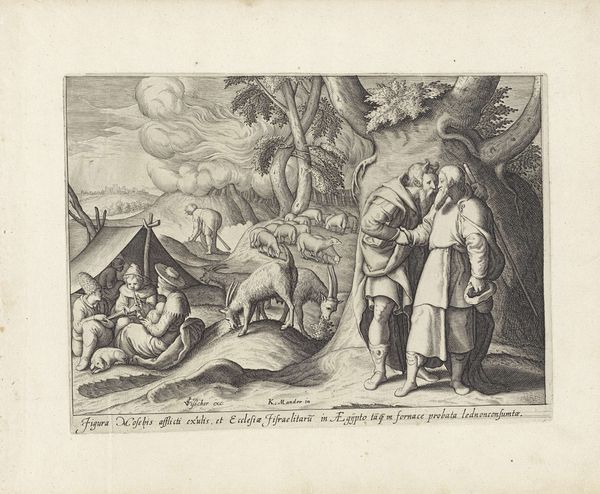
drawing, print, intaglio, paper, pen, engraving
#
drawing
#
aged paper
#
toned paper
#
light pencil work
#
medieval
#
allegory
#
narrative-art
#
baroque
# print
#
intaglio
#
old engraving style
#
sketch book
#
landscape
#
perspective
#
figuration
#
paper
#
personal sketchbook
#
ink drawing experimentation
#
pen-ink sketch
#
sketchbook drawing
#
pen
#
history-painting
#
northern-renaissance
#
sketchbook art
#
engraving
#
realism
Dimensions: height 189 mm, width 139 mm
Copyright: Rijks Museum: Open Domain
Editor: This engraving, "Crucifixion and Burial" by Jan Collaert II, made between 1570 and 1643, is fascinating. I'm struck by the division into two scenes – the Annunciation and then the Crucifixion. How do you interpret the connection between these two distinct but connected events within the Christian narrative? Curator: It’s a powerful pairing. Collaert juxtaposes not only the beginning and end of Christ's earthly life but also lightness and darkness. Note how in the Annunciation, divine light illuminates Mary. Then observe the weight and anguish in the Crucifixion. But even within the darker scene, do you see any symbols of hope or continuity? Editor: Well, Mary is present at both, linking the scenes visually, kneeling in both in supplication. The skull at the base of the cross is foreboding, right? Curator: Indeed. Yet, that skull also carries a potent symbolic weight. Known as the skull of Adam, it places Christ’s sacrifice in direct relation to humanity's original sin, suggesting redemption. What other familiar iconographic symbols connect these events for you? Editor: I guess the dove, representing the Holy Spirit, appears in the Annunciation and implies, or promises, the events of the other panel...the Crucifixion. Curator: Exactly! Consider, too, the concept of sacrifice, seen as redemptive, running throughout. By drawing these scenes together, Collaert's commentary becomes about the enduring power of faith overcoming earthly suffering. How does examining the symbolic nature change how you understand the image? Editor: It really enriches my appreciation. I saw two separate biblical scenes, but now, thanks to recognizing those symbols, I see the continuous unfolding of a grand theological concept and story of spiritual importance.
Comments
No comments
Be the first to comment and join the conversation on the ultimate creative platform.
